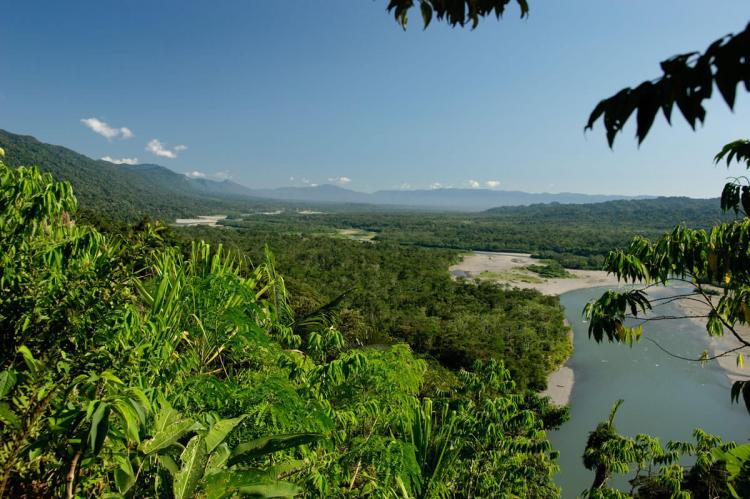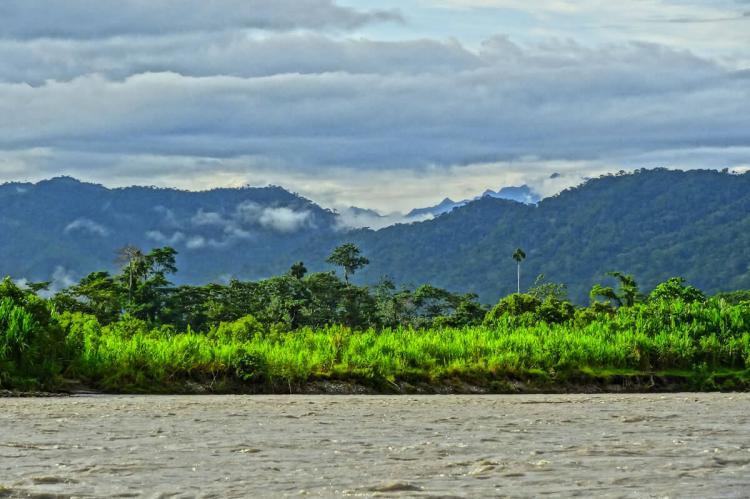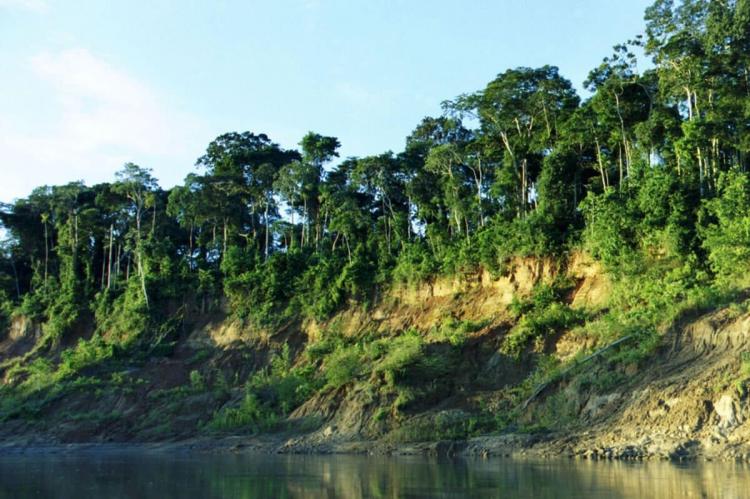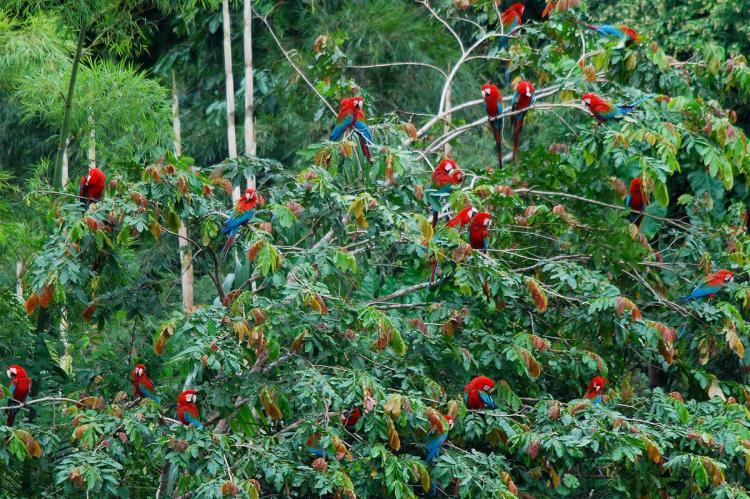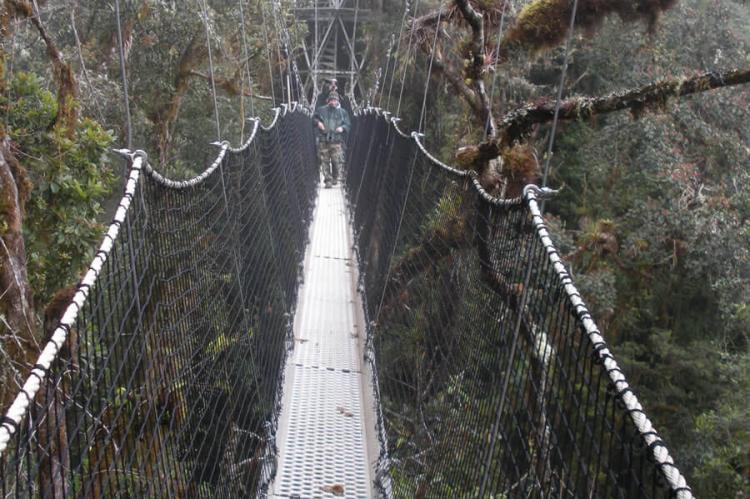Manú National Park and Biosphere Reserve: Guardian of Nature and Culture
Manú National Park and Biosphere Reserve is a biodiverse sanctuary in southwestern Peru where the Andes and Amazon meet. The untouched property is a vast watershed without roads and is home to various ecosystems, wildlife, and indigenous communities, including the "Lost City of the Incas."
Manú National Park and Biosphere Reserve
Guardian of Nature and Culture
Manú National Park and Biosphere Reserve is a world-renowned haven of biodiversity at the meeting point of the Tropical Andes and the Amazon Basin in southwestern Peru. A vast, isolated watershed, the still-roadless property has been spared from most human impacts. From its altitudinal diversity to the mysteries of Paititi, the 'Lost City of the Incas,' an intricate collage of ecosystems, wildlife, and indigenous communities call this sanctuary home.
Manú National Park
Nestled in the embrace of Madre de Dios and Cusco in Peru, Manú National Park is a colossal protectorate spanning more than 1,716,000 hectares (4,240,000 acres). The conservation journey commenced in 1968 when the Manú Nature Reserve was designated, evolving into a National Park in 1973. Subsequently, UNESCO bestowed upon it the title of a Biosphere Reserve in 1977, with the pinnacle being its recognition as a World Heritage Site in 1987.
Pristine Wilderness
This globally renowned haven of terrestrial biodiversity lies at the crossroads of the Tropical Andes and the Amazon basin in southwestern Peru. Shielded by its vastness and geographic isolation, this roadless expanse has been remarkably spared from most human impacts, emerging as a difficult-to-access sanctuary of pristine wilderness.
Altitudinal Diversity
The park's expansive reserve unfolds in successive tiers of vegetation, stretching across the altitudinal gradient of the eastern slope of the Bolivian Andes, ranging from 350 to 4,000+ meters (1,200 to 13,000+ feet) above sea level. This ecological symphony crafts a mosaic of habitats, culminating in the tropical rainforest that shelters myriad animal and plant species.
Biodiversity Extravaganza
Manú National Park's biodiversity is nothing short of a spectacle, with at least 850 identified bird species, rare inhabitants like the giant otter and armadillo, and the elusive jaguar, often glimpsed in the park's depths. The transition zones include high Andean Puna grasslands, mountain cloud forests, Yunga forests, and lowland rainforests, with the meandering Manú River connecting these diverse ecosystems before joining the Madre de Dios River.
Human History
Evidence of Incan and pre-Incan civilizations adorn the park, with ruins and petroglyphs speaking of a rich indigenous history. The local legend of Paititi, the "Lost City of the Incas," weaves a mythical thread within the park's boundaries. Various indigenous communities, such as the Matsigueka, the Yine, the Harakmbut, and the Quechua, are the sole permanent inhabitants. Some lead sedentary lives in regular contact with the modern world, while others maintain a semi-nomadic existence, practicing "voluntary isolation" or "initial contact."
Ecological Complexity
Manú National Park's ecological complexity results from its varied altitudes, microclimates, and soil compositions. This intricate dance of environmental factors crafts a broad spectrum of plant communities, from the highly diverse Andean grasslands to mostly pristine forest types—estimates of plant diversity range from 2,000 to 5,000, with some scientists suggesting even higher numbers.
Fauna
The park's fauna is a realm of continual discoveries, with over 1,000 vertebrate species documented. This includes at least 200 mammals, such as the Giant Otter, 13 species of primates, and eight felids, including the Jaguar, Puma, and the endangered Andean Mountain Cat. The wide range of estimates in various taxonomic groups highlights the vast unknowns about the park's diverse life.
Conservation Imperative
As the specter of gas extraction and road construction looms in the surroundings, the medium and longer-term developments threaten this primarily pristine property. The careful dance between development needs and the preservation of Manú National Park's integrity becomes a crucial task. A global conservation gem, it requires meticulous planning and management to ensure a harmonious balance between human aspirations and the preservation of this ecological treasure.
Manu Biosphere Reserve
Expanding the canvas of biodiversity, the Manu Biosphere Reserve engulfs 19 habitat types, showcasing the most extensive rainforest reserve globally. A haven for bird enthusiasts, with 860 species identified, the reserve reveals a remarkable blend of highland Punas, scrublands, and lowland forests along the vast Amazon plains.
Floral and Faunal Extravaganza
Over 3,000 plant species and more than 1,000 vertebrate species, including 200 mammals and 800 birds, thrive within this natural sanctuary. Echoes of Incan and pre-Incan ruins and the allure of Paititi, the 'Lost City of the Incas,' add a historical and mystical dimension to the reserve.
Socioeconomic Dynamics
Inhabited by approximately 8,600 people, the reserve harmonizes traditional practices with modern alternatives. Indigenous communities engage in swidden agriculture, hunting, and fishing, offering a glimpse into the delicate balance between preserving cultural heritage and embracing contemporary economic pursuits.
Call for Conservation
The vastness and ecological significance of Manu Biosphere Reserve demand meticulous planning and management. As the reserve faces potential threats from external developments, the conservation imperative underscores the need to protect this biodiversity treasure.
Conclusion
In conclusion, Manú National Park and Manu Biosphere Reserve emerge as guardians of biodiversity, cultural heritage, and ecological balance. These natural wonders beckon humanity to embrace responsible conservation practices, ensuring the preservation of these treasures for generations to come. The delicate dance between development and conservation becomes a symphony, orchestrating a harmonious coexistence between nature and human endeavors.
